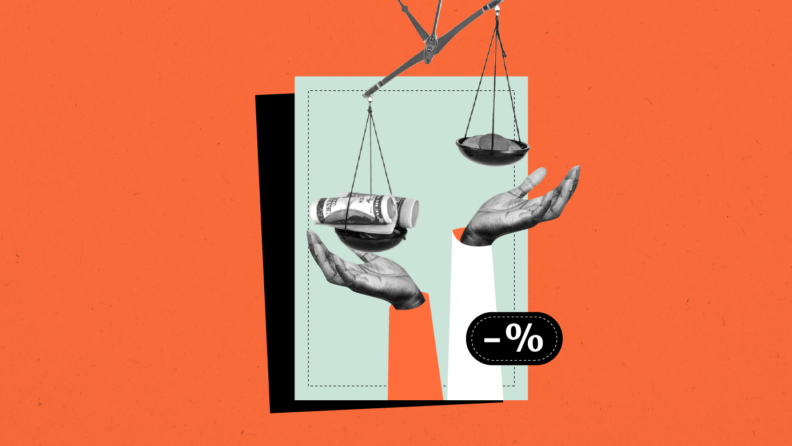You've received a wage garnishment order for one of your employees and now must make the necessary adjustments to payroll to account for them. What do you do next?
In this article, we're going to look closely at wage garnishment, from how it works to what HR's role in executing them is and why compliance is so important for the business.
What Is Wage Garnishment?
Wage garnishment is a legal process where an employer withholds a portion of an employee's pay to service their debts.
This is usually mandated by the court and can occur when an employee has defaulted on their loan repayment, failed to pay taxes or child support, or has accumulated substantial debts they can't service.
The garnishments are automatic and continue to be deducted from the employee's pay until the entire debt is paid off or arrangements are made to pay off the employee's debt.
A good payroll software platform will be set up to help you execute this with relative ease.
Factors such as the nature of the debt, the employee's disposable income, and federal and state laws determine the amount of money to be garnished. The employer's role is purely administrative—deducting decided amounts and forwarding them to the right authority in line with payroll best practices.
Types Of Wage Garnishment
There are several types of wage garnishments. Let's take a look at some of the most common ones.
| Type | Description | Maximum Garnishment Rate |
|---|---|---|
| Creditor Garnishment | Court-ordered repayment of debts such as unpaid taxes or defaulted student loans. | Varies based on debt type; student loans up to 15% of disposable income. |
| Child Support & Alimony | Garnishment for unpaid child support or alimony. | 50-60% of disposable earnings. |
| Student Loan Garnishment | Federal administrative garnishment for defaulted student loans. | Up to 15% of disposable income but no less than 30x federal minimum wage. |
| Tax Levies | IRS seizure of wages for unpaid tax debts. | Determined by filing status and exemptions. |
Creditor garnishment
In this instance, a court order requires an employer to withhold a certain percentage of an employee's income to repay a creditor. This is typically the result of unpaid taxes, defaulted student loans, or unpaid child support.
For unpaid taxes, the Internal Revenue Service (IRS) doesn't need a court order to garnish wages. They can execute it through a levy, or the legal seizure of property or funds to pay a tax debt. The limit they can take varies based on the employee's deduction rate and number of dependents.
In the case of defaulted student loans, the U.S. Department of Education or any entity collecting for this agency can garnish up to 15% of disposable income but not more than 30 times the federal minimum wage.
Lastly, a bankruptcy court order can also result in garnished wages in some circumstances, but it typically stops garnishment for unsecured debts.
Child support and alimony garnishment
Governed by the federal Consumer Credit Protection Act (CCPA) and state laws, this form of garnishment can take up to 50-60% of an employee's disposable earnings.
While garnishment of these wages is the job of your payroll function, distribution of funds to the families who need it falls to the Office of Child Support Enforcement.
In 2022, more than $30 billion worth of child support payments were collected, mostly through payroll deductions, and often executed through automated processes of payroll software systems.
Student loan garnishment
When a borrower defaults on their federal student loans, the U.S. Department of Education or its collection agencies can initiate an administrative wage garnishment without needing a court order. They can take up to 15% of the employee's disposable income, though they cannot reduce the employee's take-home pay to less than 30 times the federal minimum wage.
Borrowers facing student loan garnishment may negotiate a rehabilitation plan to stop the garnishment or consolidate their loans into a new repayment plan. Employers handling these garnishments must follow federal guidelines to ensure compliance.
Tax levies
A tax levy is a legal process where the Internal Revenue Service (IRS) seizes a portion of an employee's wages to satisfy unpaid tax debts. Unlike other garnishments, the IRS does not require a court order to impose a levy. The amount withheld is determined based on the employee's filing status, number of dependents, and standard deduction amounts.
Employers must comply with IRS levies promptly and ensure that any non-exempt portion of the employee's wages is forwarded to the IRS until the tax debt is satisfied. Employees facing a levy may contact the IRS to negotiate a payment plan or request a release of the levy under certain circumstances.
Employer Obligation To Garnish Wages
The process typically starts with the debtor being served with a notice of garnishment. Should they fail to protest successfully, the employer will be mandated by the court to execute the garnishment.
The garnishment order contains details of the debt and instructions on how the garnishment should be applied. Upon receiving the order, the employer must act immediately to enforce it, or else, face penalties themselves.
There's a cap to the percentage of the employee's wage that can be garnished, ensuring that they have an amount left to meet their living expenses.
Before deductions begin, it's crucial to note that the employer is required to provide the employee with a copy of the garnishment order and any other associated documents.
When to start wage garnishment
Garnishing wages is a process of complying with legal requirements so the garnishment schedule is closely adhered to. We have broken this process down into seven steps.
1. Receiving the Wage Garnishment Order
The garnishment process begins when an employer receives an official garnishment order or notice from a court or government agency. This document will detail the amount to be garnished from the employee's pay and provide specific instructions on how to proceed.
Immediate attention to this order is critical, as it often comes with a tight compliance timeframe.
2. Reviewing the Order
Upon receiving a garnishment order, HR professionals should first verify its authenticity and review the details carefully. This includes confirming the employee's identity, the amount to be garnished, and understanding the duration of the garnishment period.
It's essential to ensure that the order complies with state and federal laws, as these can vary significantly and impact the garnishment process.
3. Notifying the Employee
Once the garnishment order is verified, HR must then inform the affected employee. This notification should be handled sensitively, as it can be a stressful situation for the employee.
The notice should clearly explain the garnishment order, the amount to be deducted, and the employee's rights, including any potential avenues for dispute or modification of garnishment orders.
4. Calculating the Garnishment Amount
HR professionals are responsible for calculating the correct amount to be garnished from the pay period. This calculation must comply with federal and state laws, which often stipulate maximum garnishment limits and protect a certain portion of the employee's earnings.
The Consumer Credit Protection Act (CCPA) sets federal limits, but some states have additional protections and limits for employees.
5. Executing the Garnishment
After calculating the garnishment amount, the next step is to implement the deduction from the employee's wages.
This should be done in a manner that complies with the payroll cycle, whether that's bi-weekly, monthly or semimonthly, and ensures timely payment to the creditor or agency that issued the garnishment order. It's vital to maintain accurate records of all withheld amounts and payments made, as these records may be required for future verification or legal purposes.
6. Ongoing Monitoring and Adjustments
Garnishing wages requires ongoing attention. You'll want to monitor the situation with your employee to ensure continued compliance with the garnishment order and any changes in legislation that might affect the process.
Should the employee's employment status change, or the court order be lifted or adjusted, you'll need to respond promptly to make necessary adjustments.
7. Legal Compliance and Support
Given the complexity of wage garnishment laws and the potential for significant legal consequences, HR professionals should seek legal counsel when initiating the garnishment process.
Legal support can help navigate the intricacies of state and federal regulations, ensure compliance, and mitigate risks associated with garnishment procedures.
When to stop wage garnishment
Let's say your employee has fully satisfied their obligations to creditors. Now, it's time for you to end their wage garnishment. Here is how you go about doing that.
Receiving Official Release or Modification Orders
The cessation of a wage garnishment process begins with the receipt of an official release or modification order from a court or issuing agency. This document legally mandates the employer to stop or adjust the garnishment deductions.
It is critical for HR professionals to promptly review this order to understand the new terms and ensure it is authentic.
Reviewing the Order for Compliance
Upon receiving a release or modification order, HR should carefully examine the document to verify its legitimacy and to understand the specifics of stopping or adjusting the garnishment. This involves confirming the order's alignment with state and federal laws and ensuring that the instruction is clear and actionable.
Notifying the Employee
After validating the order, HR must inform the affected employee about the cessation or modification of the garnishment.
This communication should include details about the change in the garnishment status and its impact on the employee's future paychecks. Transparency and sensitivity are crucial in this step to maintain trust and support the employee through the transition.
Adjusting Payroll
The next critical step is to adjust the payroll system to reflect the cessation or modification of the garnishment. This adjustment must be accurate and timely to prevent any incorrect deductions from the employee's wages.
HR should work closely with the payroll service to ensure that changes are implemented correctly and in accordance with the pay cycle.
Finalizing Payments
If the garnishment order is fully satisfied or if a settlement has been reached, HR may need to make a final payment to the creditor or agency. Ensuring this payment is processed correctly and on time is vital for fulfilling the employer's legal obligations and for officially closing out the garnishment process.
Record Keeping and Documentation
Maintaining comprehensive records of all communications, transactions, and adjustments related to the garnishment is essential.
These documents should include the original garnishment order, the release or modification order, notifications to the employee, and records of all payments made. Proper documentation supports compliance and can be crucial in the event of disputes or audits.
You can also keep any relevant notes in your payroll management checklist.
Employer responsibilities
Let's recap. In all that goes into knowing when to start and stop a wage garnishment, the following are the key responsibilities of the employer.
- Timely Compliance: Upon receiving a garnishment order, employers must act immediately to implement the wage deduction as instructed. Delays or failures to comply can result in penalties or legal repercussions for the employer.
- Employee Notification: Employers are required to provide the affected employee with a copy of the garnishment order and any accompanying documents. This ensures transparency and allows the employee to understand their rights and obligations.
- Accurate Calculations: Employers must calculate the garnishment amount based on the applicable laws, such as federal Consumer Credit Protection Act (CCPA) limits or state-specific guidelines. Incorrect calculations can lead to non-compliance and disputes.
- Record Keeping: Maintaining accurate records of garnishment orders, deductions, and payments is essential. Employers should retain these records for audit purposes and to resolve potential disputes.
- Remittance of Funds: Employers must ensure that the garnished funds are forwarded promptly to the appropriate creditor, agency, or court as specified in the garnishment order.
- Monitoring Changes: Employers should stay informed about changes to garnishment orders, such as modifications, releases, or employee status updates. Prompt adjustments to payroll systems are necessary to reflect these changes.
- Protecting Employee Rights: Employers should avoid discriminatory actions against employees due to wage garnishment, as this is prohibited by federal law. Employees cannot be terminated solely because of a garnishment order.
The Rules Of Wage Garnishment
Wage garnishment limits and regulations play a crucial role in enforcing obligations for debt repayment while simultaneously shielding the employee from unduly punitive deductions.
Under the Title III of CCPA, the maximum amount that can be garnished from an employee's disposable earnings is determined by federal law. However, individual state laws may vary, potentially setting the limit lower than that of federal standards.
Employers have the responsibility to understand these complex regulations. Failure to correctly process garnishments can lead to penalties and fines for the company, making it vital to accurately interpret these boundaries using reliable HR software
Employees facing garnished wages have rights designed to protect their interests and ensure fair treatment throughout the process. The aforementioned CCPA handles limits on what the garnishments can be.
Other rights include the formal notice of wage garnishments and instructions on how to contest it. The notification period provides employees with a crucial opportunity to verify the debt's validity, negotiate a payment plan, or seek legal counsel to challenge the garnishment if necessary.
Lastly, it's important for employees to know that federal law prohibits employers from terminating or disciplining an employee solely because of a wage garnishment for any single debt. However, this protection does not extend to employees with multiple garnishments from different debts.
Violations of these rights, such as terminating an employee solely because their wages have been garnished for a single debt, can lead to additional legal actions against the company, including lawsuits for wrongful termination.
Penalties and sanctions
Non-compliance with wage garnishment orders can lead to significant penalties and sanctions for companies, underscoring the importance of adhering strictly to legal mandates in these situations.
Companies that fail to withhold the designated amounts from an employee's wages as required by a garnishment order may find themselves directly liable for the amounts that should have been garnished. This means that a company could be compelled to pay out of its own funds the debt the employee owes, which can be a substantial financial burden depending on the size and nature of the garnishment.
In addition to financial liabilities, companies can also face legal consequences for non-compliance, including fines and penalties imposed by the court or issuing agency.
These penalties can vary widely but are intended to enforce compliance and ensure that creditors' rights are protected.
Repeated or egregious violations of garnishment laws may attract regulatory scrutiny, leading to audits, investigations, and potential damage to the company's reputation.
Such outcomes can have long-term implications for a business, affecting its operational standing and relationships with employees, partners, and the broader community.
State laws for wage garnishments
While federal laws set the baseline for garnishment practices, including the maximum percentage of an individual's earnings that can be garnished, state laws can further refine or impose additional restrictions on these processes.
For instance, some states enact lower limits on the amount that can be garnished, offering greater protection to employees' earnings than federal law requires. This means that in states with such provisions, employers must adhere to the more restrictive state laws when processing garnishments.
A good example of this is Florida where the following rules apply:
- Only one wage garnishment permitted per individual
- If disposable income is less than 30 times the federal minimum wage, your wages cannot be garnished.
- Florida Head of Family Exemption: If the employee is the head of a household and is making less than $750 per week, wages cannot be garnished.
State laws can also dictate the types of debts that are subject to garnishment and may prioritize certain debts over others.
For example, some states give precedence to child support or alimony garnishments over consumer debt orders. This prioritization can affect the order in which multiple garnishments are processed and the total amount that can be legally garnished from an employee's wages.
Understanding these nuances is crucial for employers to ensure compliance and for employees to know their rights and the protections afforded to them under their state's legal framework.
The procedures for contesting a garnishment, the rights of the employee, and the responsibilities of the employer can vary significantly from one state to another. These variations emphasize the importance of consulting with legal professionals familiar with the specific garnishment laws in the state where the company operates and where the employee resides.
Federal vs state
| Aspect | Federal regulation | State-specific regulations |
|---|---|---|
| Garnishment Limits | 25% of disposable earnings or amount exceeding 30x federal minimum wage. | States may impose stricter caps, such as lower percentages or income thresholds. |
| Exemptions | Limited exemptions, e.g., Social Security and veterans' benefits. | Additional exemptions, e.g., head of family protections or specific income limits. |
| Debt Prioritization | Child support, alimony, and federal debts take precedence. | May vary. Some states prioritize child support over consumer debts. |
| Process | Uniform process across all states. | Varies significantly, including procedures for contesting garnishments. |
| Employer Compliance | Adherence to federal laws. | Must comply with both federal and state laws, prioritizing stricter requirements. |
Employee rights during wage garnishment
Employees subjected to wage garnishment are afforded several protections under federal and state laws to ensure fairness and prevent undue hardship. These rights are critical for safeguarding employees’ financial stability and ensuring they are treated justly throughout the garnishment process.
By understanding these protections, employees can better manage their obligations while maintaining sufficient income for essential living expenses. Key rights include:
- Protection Against Termination: Under the federal Consumer Credit Protection Act (CCPA), employees cannot be terminated solely because their wages are being garnished for one debt. However, this protection may not extend to cases where multiple garnishments are in effect.
- Advance Notification: Employees have the right to receive a copy of the garnishment order from their employer. This ensures transparency and gives employees the opportunity to verify the legitimacy of the order.
- Ability to Contest Garnishment: Employees can challenge a garnishment order if they believe it is incorrect or unjust. This may involve filing a dispute in court or negotiating directly with the creditor.
- Exemption Claims: Employees may claim exemptions based on their financial situation or specific state laws. For example, funds from Social Security benefits, disability payments, or veterans’ benefits may be exempt from garnishment in many cases. Employees can file for these exemptions by submitting a claim of exemption form to the court handling the garnishment or directly to the creditor. Supporting documentation, such as proof of income or exemption status, is often required to substantiate the claim. For example, certain funds, such as Social Security benefits, may be exempt from garnishment.
- Access to Information: Employees are entitled to detailed information about the garnishment, including the amount being withheld, the creditor or agency receiving the funds, and the remaining balance on the debt.
- Right to Modify or End Garnishment: If circumstances change, such as a reduction in income or satisfaction of the debt, employees can request a modification or termination of the garnishment order. This typically involves submitting a formal request to the court or creditor, accompanied by documentation that supports the change in circumstances. Employees may need to provide proof of reduced income, medical expenses, or other financial hardships. Additionally, consulting with legal counsel or seeking assistance from an HR department can help ensure the process is handled correctly and efficiently. This typically requires providing documentation to the court or creditor.
Limits on Garnishment Amounts
he Consumer Credit Protection Act (CCPA) establishes critical limits on the amount of an employee's disposable earnings that can be garnished. These limits are designed to ensure that employees retain adequate income for essential living expenses:
- Standard Limits: Under the CCPA, garnishment is capped at the lesser of 25% of disposable earnings or the amount by which weekly disposable income exceeds 30 times the federal minimum wage. For example, if the federal minimum wage is $7.25 per hour, 30 times this rate is $217.50. Earnings beyond this threshold are subject to garnishment, up to 25%.
- Child Support and Alimony: For child support or alimony orders, the limits are higher. Employees may have 50-60% of their disposable income garnished, depending on whether they are supporting another spouse or child. If an employee is not supporting another spouse or child, up to 60% of disposable earnings can be garnished, and an additional 5% can be added for payments over 12 weeks in arrears.
- Federal Student Loans: Garnishment for defaulted federal student loans is limited to 15% of disposable income, and employees must retain at least 30 times the federal minimum wage as take-home pay.
- Tax Levies: Garnishment limits for federal tax debts are determined based on IRS guidelines, which account for the taxpayer's filing status and number of dependents. Unlike other garnishments, there are no fixed percentage limits; instead, a minimum exempt amount is calculated to ensure basic living expenses are covered.
Impact Of Wage Garnishment On Credit And Financial Health
Garnished wages can have substantial influence on an individual's credit score and overall financial health.
A successful wage garnishment indicates a default judgment, which is a public record that can significantly lower a credit score.
The judgment stays on the credit report for seven years, negatively affecting the debtor's ability to procure future loans and credit as potential lenders may consider them a high-risk debtor.
Additionally, a reduced paycheck due to wage garnishments can strain a person's monthly budget. If an individual is living paycheck to paycheck, a decrease in income may result in their incapability to meet other financial obligations.
Over time, this financial stress can lead to more defaulted loans and missed payments, resulting in further derogatory marks on their credit report.
The cycle of financial instability can continue unless proactive steps for damage control and financial planning are taken. Be sure to consider financial literacy programs for these employees to help them make the most of their pay check.
If you want to learn more about all things payroll and how to support the financial wellbeing of your employees, subscribe to the People Managing People newsletter. You'll get the latest news, insights and in depth content to help you address the challenges you face as an HR professional.




